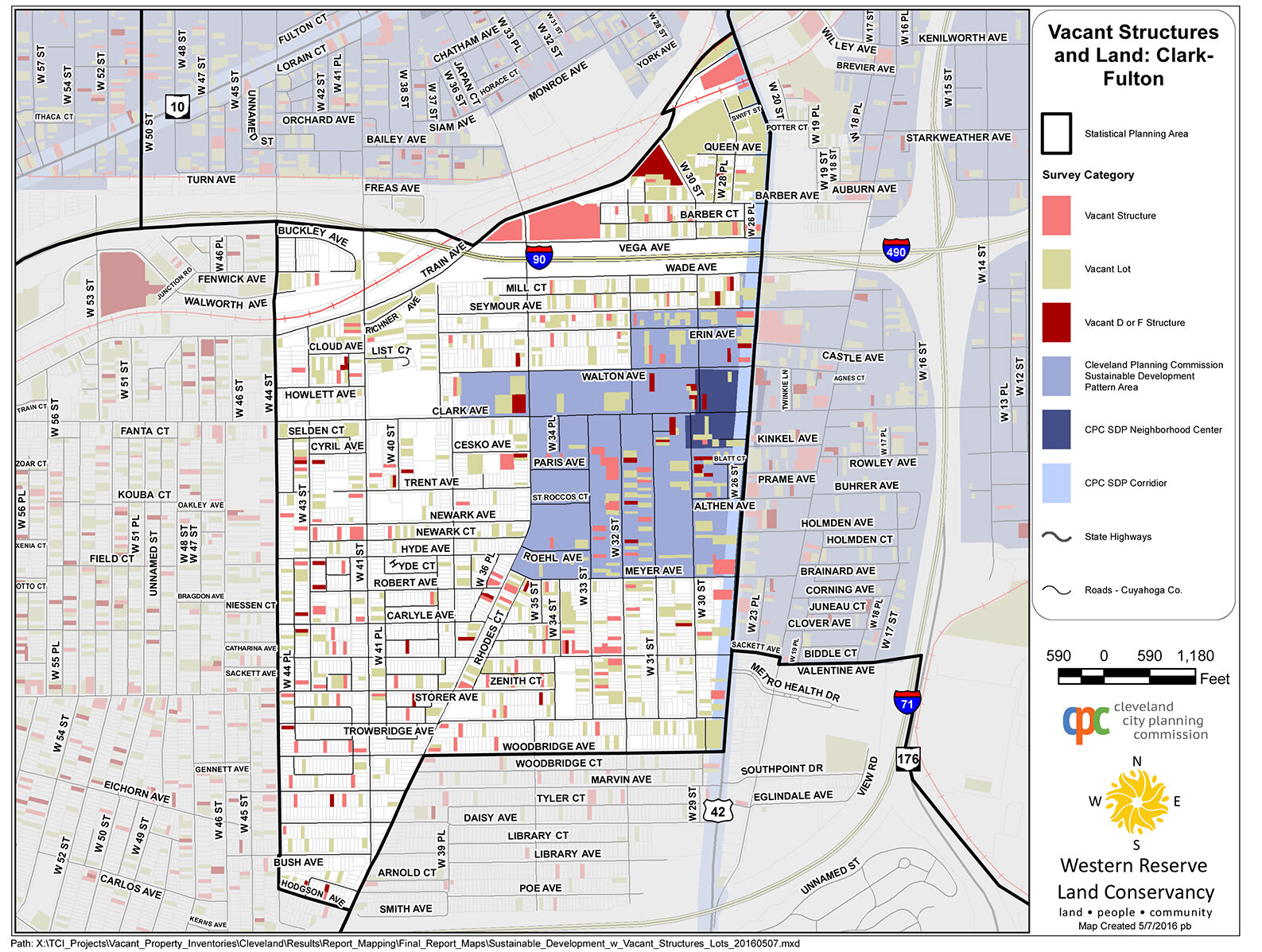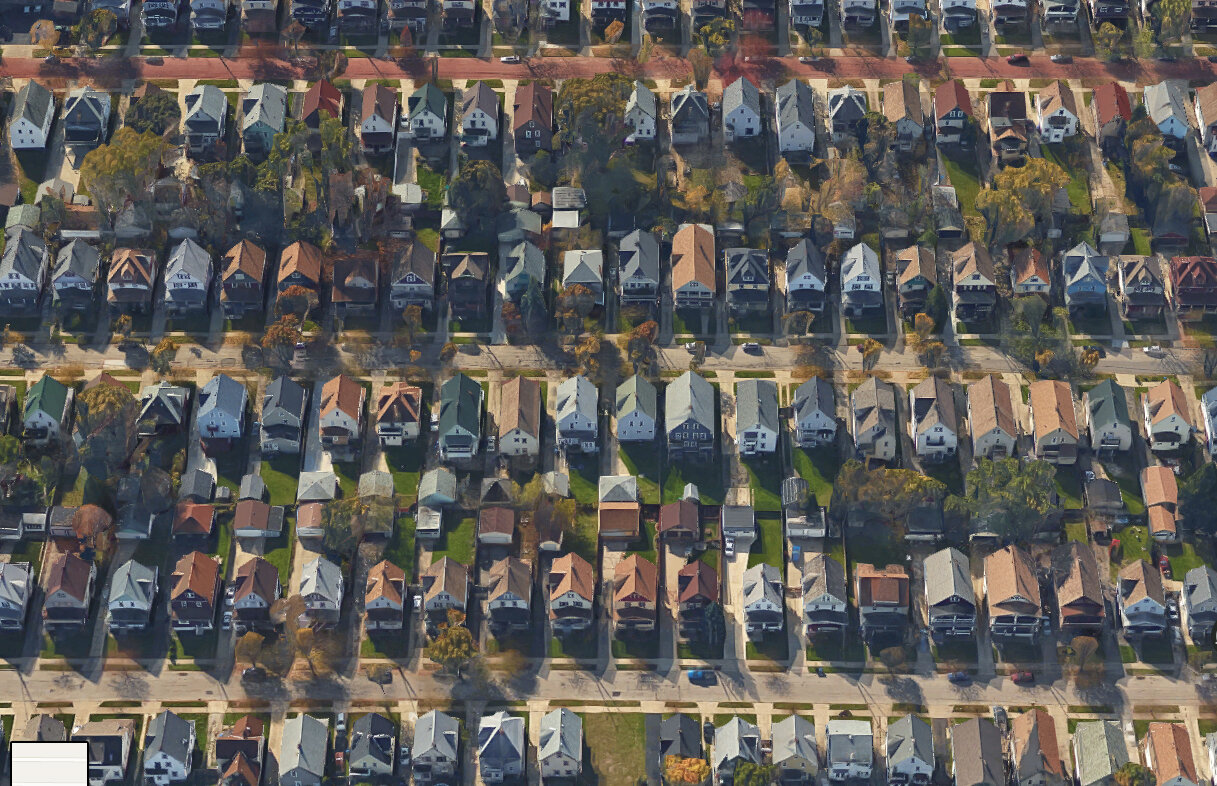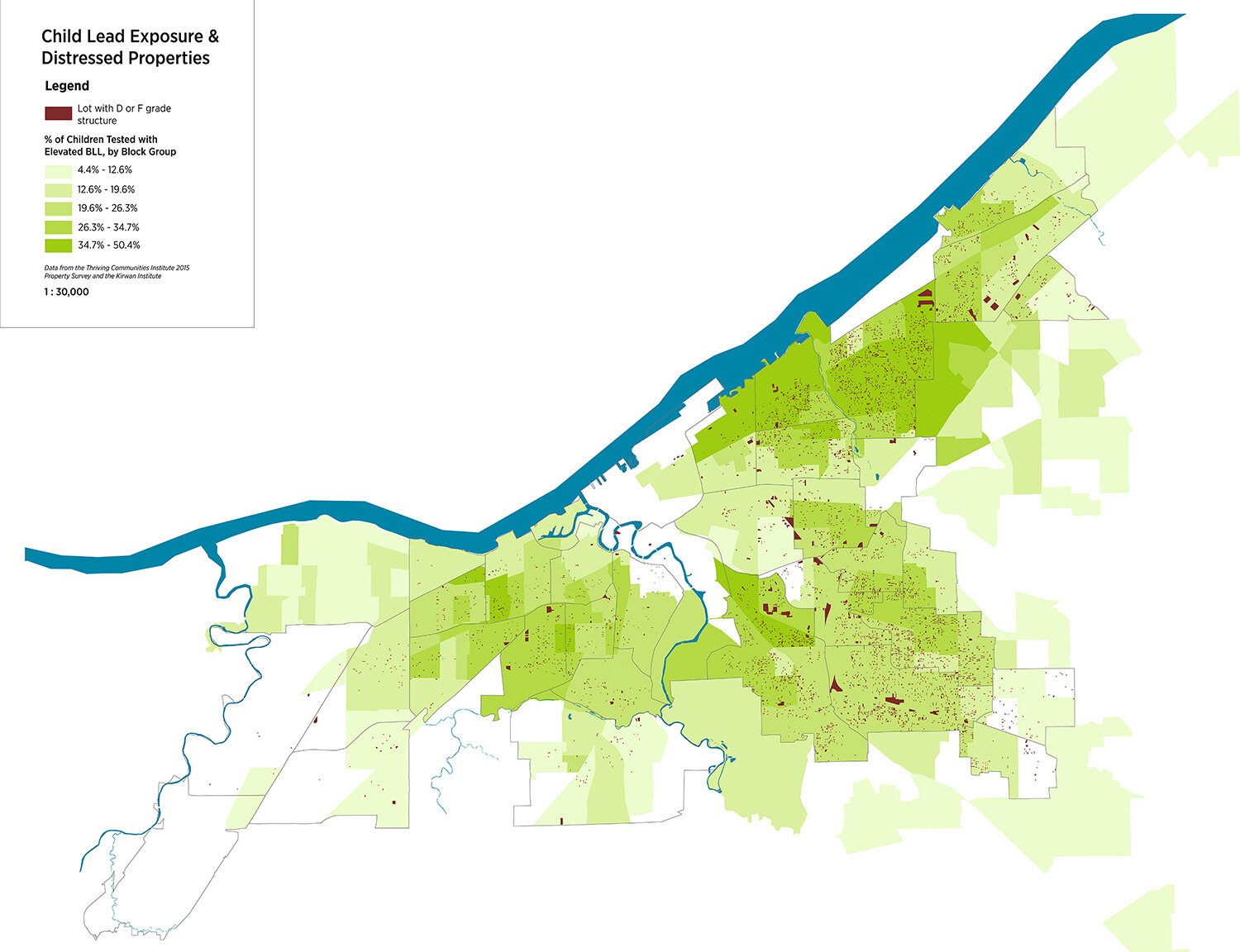Ohio cities were ravaged by the foreclosure crisis. Statewide, the presence of as many as 100,000 vacant and abandoned homes drove down property values, became magnets for criminal activity, and led to an outmigration of urban residents.
Blight removal, vacant land stewardship, and neighborhood revitalization are crucially important in Cleveland. To assist in these efforts, Thriving Communities conducted a citywide property inventory in 2015, with support from the Cleveland Foundation, as well as the Cleveland Cavaliers, JACK Entertainment, and Quicken Loans. The inventory was completed in cooperation with the City’s Department of Building and Housing, Cleveland City Council, and local community development corporations. More than 158,000 residential, commercial, and industrial properties in the city were inventoried.
This report documents the building conditions found through the inventory and provides a framework for blight removal and reinvestment city-wide. The 2015 Cleveland Property Inventory provides a detailed look at property conditions throughout the city, block by block and building by building. In short, there are many deteriorated buildings in Cleveland–over 6,000 at the time of the inventory. But there are also neighborhoods where most homes are occupied and well-maintained, and local businesses are thriving. The report also captures the stories of Cleveland residents as they navigate the opportunities and challenges of a city in transition, as a way of contextualizing the large amount of data presented in this report.
Project Partners
Western Reserve Land Conservancy’s Thriving Communities Program
Bellaire-Puritas Development Corporation
Mount Pleasant NOW Development Corporation
Northeast Shores Development Corporation
MetroWest (formerly Stockyard, Clark-Fulton & Brooklyn Centre Neighborhood Development Corporation)
Dan McGraw




